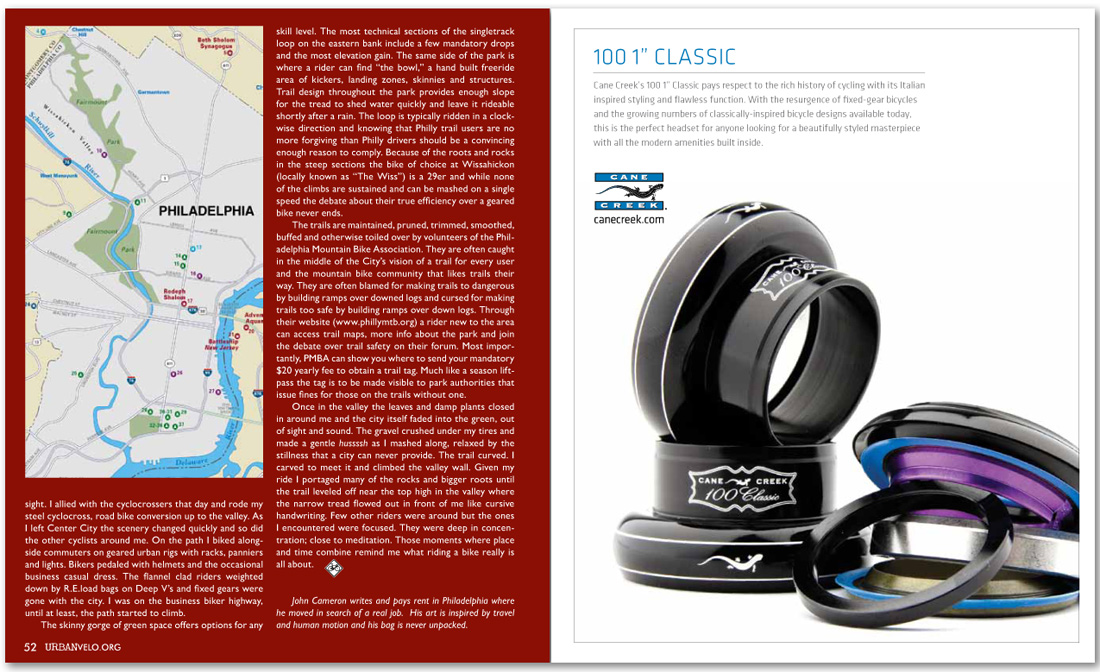


sight. I allied with the cyclocrossers that day and rode my steel cyclocross, road bike conversion up to the valley. As I left Center City the scenery changed quickly and so did the other cyclists around me. On the path I biked alongside commuters on geared urban rigs with racks, panniers and lights. Bikers pedaled with helmets and the occasional business casual dress. The flannel clad riders weighted down by R.E.load bags on Deep V’s and fixed gears were gone with the city. I was on the business biker highway, until at least, the path started to climb.
The skinny gorge of green space offers options for any skill level. The most technical sections of the singletrack loop on the eastern bank include a few mandatory drops and the most elevation gain. The same side of the park is where a rider can find “the bowl,” a hand built freeride area of kickers, landing zones, skinnies and structures. Trail design throughout the park provides enough slope for the tread to shed water quickly and leave it rideable shortly after a rain. The loop is typically ridden in a clockwise direction and knowing that Philly trail users are no more forgiving than Philly drivers should be a convincing enough reason to comply. Because of the roots and rocks in the steep sections the bike of choice at Wissahickon (locally known as “The Wiss”) is a 29er and while none of the climbs are sustained and can be mashed on a single speed the debate about their true efficiency over a geared bike never ends.
The trails are maintained, pruned, trimmed, smoothed, buffed and otherwise toiled over by volunteers of the Philadelphia Mountain Bike Association. They are often caught in the middle of the City’s vision of a trail for every user and the mountain bike community that likes trails their way. They are often blamed for making trails to dangerous by building ramps over downed logs and cursed for making trails too safe by building ramps over down logs. Through their website (www.phillymtb.org) a rider new to the area can access trail maps, more info about the park and join the debate over trail safety on their forum. Most importantly, PMBA can show you where to send your mandatory $20 yearly fee to obtain a trail tag. Much like a season lift-pass the tag is to be made visible to park authorities that issue fines for those on the trails without one.
Once in the valley the leaves and damp plants closed in around me and the city itself faded into the green, out of sight and sound. The gravel crushed under my tires and made a gentle hussssh as I mashed along, relaxed by the stillness that a city can never provide. The trail curved. I carved to meet it and climbed the valley wall. Given my ride I portaged many of the rocks and bigger roots until the trail leveled off near the top high in the valley where the narrow tread flowed out in front of me like cursive handwriting. Few other riders were around but the ones I encountered were focused. They were deep in concentration; close to meditation. Those moments where place and time combine remind me what riding a bike really is all about.
John Cameron writes and pays rent in Philadelphia where he moved in search of a real job. His art is inspired by travel and human motion and his bag is never unpacked.
Cane Creek